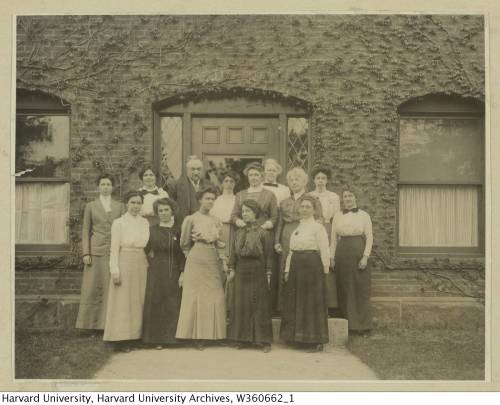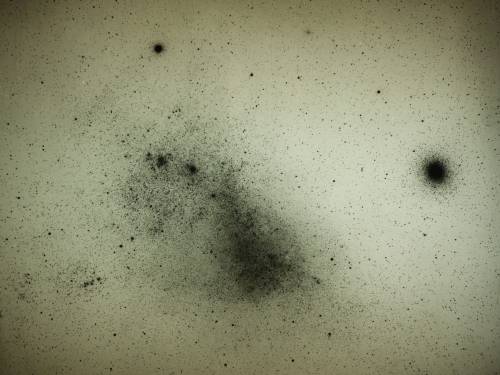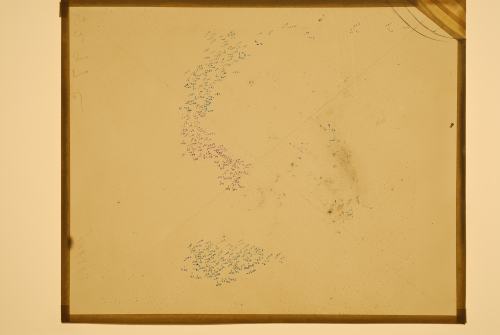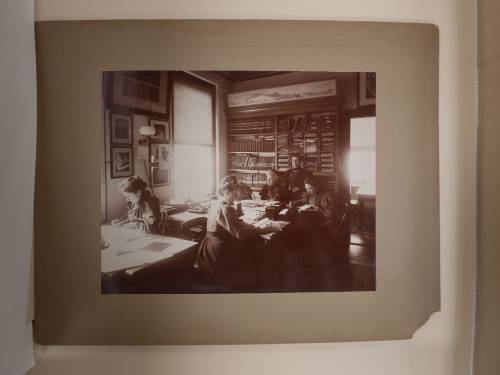At Last, We’ve Seen What Might Be The Primary Building Blocks Of Memories Lighting Up In The Brains

At last, we’ve seen what might be the primary building blocks of memories lighting up in the brains of mice.
We have cells in our brains – and so do rodents – that keep track of our location and the distances we’ve travelled. These neurons are also known to fire in sequence when a rat is resting, as if the animal is mentally retracing its path – a process that probably helps memories form, says Rosa Cossart at the Institut de Neurobiologie de la Méditerranée in Marseille, France.
But without a way of mapping the activity of a large number of these individual neurons, the pattern that these replaying neurons form in the brain has been unclear. Researchers have suspected for decades that the cells might fire together in small groups, but nobody could really look at them, says Cossart.
To get a look, Cossart and her team added a fluorescent protein to the neurons of four mice. This protein fluoresces the most when calcium ions flood into a cell – a sign that a neuron is actively firing. The team used this fluorescence to map neuron activity much more widely than previous techniques, using implanted electrodes, have been able to do.
Observing the activity of more than 1000 neurons per mouse, the team watched what happened when mice walked on a treadmill or stood still.
As expected, when the mice were running, the neurons that trace how far the animal has travelled fired in a sequential pattern, keeping track.
These same cells also lit up while the mice were resting, but in a strange pattern. As they reflected on their memories, the neurons fired in the same sequence as they had when the animals were running, but much faster. And rather than firing in turn individually, they fired together in sequential blocks that corresponded to particular fragments of a mouse’s run.
“We’ve been able to image the individual building-blocks of memory,” Cossart says, each one reflecting a chunk of the original episode that the mouse experienced.
Continue Reading.
More Posts from Contradictiontonature and Others




This team of early female astronomers created the star classification system we use today.
In the late 19th century, astronomy was a growing field. At the time, Edward Pickering, the director of the Harvard College Observatory, was working to create a classification system for stars by capturing the light from these distant celestial objects onto photographic glass plates. A team of female assistants and astronomers meticulously maintained and analyzed these delicate negatives. In her new book, The Glass Universe: How the Ladies of the Harvard Observatory Took the Measure of the Stars, Dava Sobel shares the stories of these female “human computers” and how their work helped to advance the field of astronomy and the role of women in science.
This team of astronomers included Williamina Fleming, who was once Pickering’s maid but eventually became a supervisor to the group and went on to identify hundreds of variable stars. And Henrietta Swan Leavitt’s observations about the luminosity of stars would shape later ideas about the expanding universe.
Listen to the interview here.
[Photos courtesy of The Glass Universe]

The Portuguese man o’ war delivers a powerful sting to its prey—and sometimes to people—through venom-filled structures on its tentacles. It is not a jellyfish, but rather a colony of different types of zooids (small animals). Jean Louis Coutant engraved the plate for this illustration.

It’s #InternationalWomensDay! Here are twelve pioneering female chemists. Larger image & downloadable poster: http://wp.me/p4aPLT-2ra
![WATCH: Crystal Birth, A Beautiful Timelapse Of Metallic Crystals Forming In Chemical Solutions [video]](https://64.media.tumblr.com/a6b789bd547bb0fc1e3119df87332f1a/tumblr_oghrhqfMiX1rte5gyo2_500.gif)
![WATCH: Crystal Birth, A Beautiful Timelapse Of Metallic Crystals Forming In Chemical Solutions [video]](https://64.media.tumblr.com/0c08f977f51ba218837b72a94f7bbd69/tumblr_oghrhqfMiX1rte5gyo4_500.gif)
![WATCH: Crystal Birth, A Beautiful Timelapse Of Metallic Crystals Forming In Chemical Solutions [video]](https://64.media.tumblr.com/94f32be0db445db0cdfe2546b015295b/tumblr_oghrhqfMiX1rte5gyo1_500.gif)
![WATCH: Crystal Birth, A Beautiful Timelapse Of Metallic Crystals Forming In Chemical Solutions [video]](https://64.media.tumblr.com/333f1f1da60d5ff8500aa7a751dba6c4/tumblr_oghrhqfMiX1rte5gyo3_500.gif)
WATCH: Crystal Birth, a Beautiful Timelapse of Metallic Crystals Forming in Chemical Solutions [video]

It was one of the very first motion pictures ever made: a galloping mare filmed in 1878 by the British photographer Eadweard Muybridge, who was trying to learn whether horses in motion ever become truly airborne.
More than a century later, that clip has rejoined the cutting edge. It is now the first movie ever to be encoded in the DNA of a living cell, where it can be retrieved at will and multiplied indefinitely as the host divides and grows.
The advance, reported on Wednesday in the journal Nature by researchers at Harvard Medical School, is the latest and perhaps most astonishing example of the genome’s potential as a vast storage device.
Continue Reading.

(Image caption: An fMRI scan shows regions of the brain that become active when devoutly religious study participants have a spiritual experience, including a reward center in the brain, the nucleus accumbens. Credit: Jeffrey Anderson)
This is your brain on God
Religious and spiritual experiences activate the brain reward circuits in much the same way as love, sex, gambling, drugs and music, report researchers at the University of Utah School of Medicine. The findings were published in the journal Social Neuroscience.
“We’re just beginning to understand how the brain participates in experiences that believers interpret as spiritual, divine or transcendent,” says senior author and neuroradiologist Jeff Anderson. “In the last few years, brain imaging technologies have matured in ways that are letting us approach questions that have been around for millennia.”
Specifically, the investigators set out to determine which brain networks are involved in representing spiritual feelings in one group, devout Mormons, by creating an environment that triggered participants to “feel the Spirit.” Identifying this feeling of peace and closeness with God in oneself and others is a critically important part of Mormons’ lives — they make decisions based on these feelings; treat them as confirmation of doctrinal principles; and view them as a primary means of communication with the divine.
During fMRI scans, 19 young-adult church members — including seven females and 12 males — performed four tasks in response to content meant to evoke spiritual feelings. The hour-long exam included six minutes of rest; six minutes of audiovisual control (a video detailing their church’s membership statistics); eight minutes of quotations by Mormon and world religious leaders; eight minutes of reading familiar passages from the Book of Mormon; 12 minutes of audiovisual stimuli (church-produced video of family and Biblical scenes, and other religiously evocative content); and another eight minutes of quotations.
During the initial quotations portion of the exam, participants — each a former full-time missionary — were shown a series of quotes, each followed by the question “Are you feeling the spirit?” Participants responded with answers ranging from “not feeling” to “very strongly feeling.”
Researchers collected detailed assessments of the feelings of participants, who, almost universally, reported experiencing the kinds of feelings typical of an intense worship service. They described feelings of peace and physical sensations of warmth. Many were in tears by the end of the scan. In one experiment, participants pushed a button when they felt a peak spiritual feeling while watching church-produced stimuli.
“When our study participants were instructed to think about a savior, about being with their families for eternity, about their heavenly rewards, their brains and bodies physically responded,” says lead author Michael Ferguson, who carried out the study as a bioengineering graduate student at the University of Utah.
Based on fMRI scans, the researchers found that powerful spiritual feelings were reproducibly associated with activation in the nucleus accumbens, a critical brain region for processing reward. Peak activity occurred about 1-3 seconds before participants pushed the button and was replicated in each of the four tasks. As participants were experiencing peak feelings, their hearts beat faster and their breathing deepened.
In addition to the brain’s reward circuits, the researchers found that spiritual feelings were associated with the medial prefrontal cortex, which is a complex brain region that is activated by tasks involving valuation, judgment and moral reasoning. Spiritual feelings also activated brain regions associated with focused attention.
“Religious experience is perhaps the most influential part of how people make decisions that affect all of us, for good and for ill. Understanding what happens in the brain to contribute to those decisions is really important,” says Anderson, noting that we don’t yet know if believers of other religions would respond the same way. Work by others suggests that the brain responds quite differently to meditative and contemplative practices characteristic of some eastern religions, but so far little is known about the neuroscience of western spiritual practices.
The study is the first initiative of the Religious Brain Project, launched by a group of University of Utah researchers in 2014, which aims to understand how the brain operates in people with deep spiritual and religious beliefs.

In the Alice in Wonderland world of the atomically small, things can be in two places at once, merely looking at a particle can alter a twin on the other side of the universe apparently instantaneously, and theoretical cats can be both alive and dead.
Certainty is also somehow replaced by chance, an idea that once moved a somewhat vexed Albert Einstein to famously say: “God doesn’t play dice with the universe.”
Such strange, almost magical effects have always been confined to the world of photons and atoms – until now.
In the journal Nature, scientists at the US National Institute of Standards and Technology (NIST) in Colorado reported the first “glimpses” of quantum effects, as they are known, happening on a scale just large enough to be seen by the human eye.
It is a breakthrough that could have significant implications for attempts to create quantum computers that are many millions of times faster than the current machines.
One of the researchers, Dr John Teufel, told the Independent: “I think we’re in an extremely exciting time where this technology we have available gives us access to things people have been talking about as thought experiments for decades.
“Just now what’s exciting is we can go into the laboratory and actually witness these quantum effects.”
Continue Reading.

Even after someone is declared dead, life continues in the body, suggests a surprising new study with important implications.
Gene expression — when information stored in DNA is converted into instructions for making proteinsor other molecules — actually increases in some cases after death, according to the new paper, which tracked postmortem activity and is published in the journal Open Biology.
“Not all cells are ‘dead’ when an organism dies,” senior author Peter Noble of the University of Washington and Alabama State University told Seeker. “Different cell types have different life spans, generation times and resilience to extreme stress.”
In fact, some cells seem to fight to live after the organism has died.
“It is likely that some cells remain alive and are attempting to repair themselves, specifically stem cells,” Noble said.
-
 re-wiredbrain-blog liked this · 8 years ago
re-wiredbrain-blog liked this · 8 years ago -
 villanuevaemm liked this · 8 years ago
villanuevaemm liked this · 8 years ago -
 flowerforever reblogged this · 8 years ago
flowerforever reblogged this · 8 years ago -
 mjthetransguy2-blog reblogged this · 8 years ago
mjthetransguy2-blog reblogged this · 8 years ago -
 moonwolf413 liked this · 8 years ago
moonwolf413 liked this · 8 years ago -
 mastersplintersshadow liked this · 8 years ago
mastersplintersshadow liked this · 8 years ago -
 yuvalyehiam liked this · 8 years ago
yuvalyehiam liked this · 8 years ago -
 ipmemoryresidue reblogged this · 8 years ago
ipmemoryresidue reblogged this · 8 years ago -
 jayyemanin liked this · 8 years ago
jayyemanin liked this · 8 years ago -
 mawaru-kagami liked this · 8 years ago
mawaru-kagami liked this · 8 years ago -
 yuumori reblogged this · 8 years ago
yuumori reblogged this · 8 years ago -
 transwhore-blog1 liked this · 8 years ago
transwhore-blog1 liked this · 8 years ago -
 scienceeeee-blog reblogged this · 8 years ago
scienceeeee-blog reblogged this · 8 years ago -
 carboncopyheroes liked this · 8 years ago
carboncopyheroes liked this · 8 years ago -
 vampyr-money liked this · 8 years ago
vampyr-money liked this · 8 years ago -
 zanygoose-blog liked this · 8 years ago
zanygoose-blog liked this · 8 years ago -
 cheezbot liked this · 8 years ago
cheezbot liked this · 8 years ago -
 jurasslc-blog liked this · 8 years ago
jurasslc-blog liked this · 8 years ago -
 titaniumwhitee reblogged this · 8 years ago
titaniumwhitee reblogged this · 8 years ago -
 ioatena reblogged this · 8 years ago
ioatena reblogged this · 8 years ago -
 ioatena liked this · 8 years ago
ioatena liked this · 8 years ago -
 andoniss reblogged this · 8 years ago
andoniss reblogged this · 8 years ago -
 askprincessmoon liked this · 8 years ago
askprincessmoon liked this · 8 years ago -
 lizardphobia reblogged this · 8 years ago
lizardphobia reblogged this · 8 years ago -
 zeusprah reblogged this · 8 years ago
zeusprah reblogged this · 8 years ago -
 icantforesee reblogged this · 8 years ago
icantforesee reblogged this · 8 years ago -
 icantforesee liked this · 8 years ago
icantforesee liked this · 8 years ago -
 mylifeislemonade liked this · 8 years ago
mylifeislemonade liked this · 8 years ago -
 forreveries reblogged this · 8 years ago
forreveries reblogged this · 8 years ago -
 davyjonesin liked this · 8 years ago
davyjonesin liked this · 8 years ago -
 3nd liked this · 8 years ago
3nd liked this · 8 years ago -
 cumberbees reblogged this · 8 years ago
cumberbees reblogged this · 8 years ago -
 cumberbees liked this · 8 years ago
cumberbees liked this · 8 years ago -
 zazamatic liked this · 8 years ago
zazamatic liked this · 8 years ago -
 callmemr-stark liked this · 8 years ago
callmemr-stark liked this · 8 years ago -
 phroyd reblogged this · 8 years ago
phroyd reblogged this · 8 years ago -
 neverknwsbest reblogged this · 8 years ago
neverknwsbest reblogged this · 8 years ago -
 neverknwsbest liked this · 8 years ago
neverknwsbest liked this · 8 years ago -
 glorious-buttwings liked this · 8 years ago
glorious-buttwings liked this · 8 years ago
A pharmacist and a little science sideblog. "Knowledge belongs to humanity, and is the torch which illuminates the world." - Louis Pasteur
215 posts

